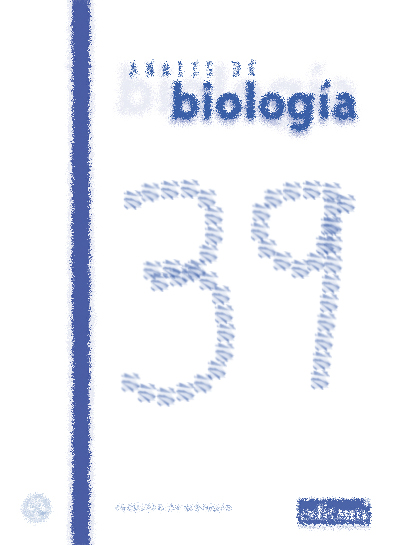Anatomía del tallo y desarrollo del floema interxilar en Strychnos bredemeyeri (Loganiaceae)
Resumen
En Strychnos bredemeyeri, pequeñas porciones de cambium dejan temporalmente de producir xilema secundario y produce más floema centrífugamente. Un nuevo segmento del cambium se diferencia en la parte exterior de este floema formado, entonces estos se unen al cilindro regular para formar un anillo. Esta repetida actividad da como resultado la inclusión de islas de floema dentro del xilema secundario, llamado floema interxilar. Luego aparecen nuevos elementos del floema asociado al cambium y a las islas de floema que aplastan los elementos no conductores de islas de floema. Junto al floema interxilar, el floema intraxilar está formado por la adición desde las células marginales de la médula. Posteriormente, pequeños arcos del cambium interno se inician en el borde interno del protoxilema en tallos gruesos.
Descargas
-
Resumen350
-
pdf 129
Las obras que se publican en esta revista están sujetas a los siguientes términos:
1. El Servicio de Publicaciones de la Universidad de Murcia (la editorial) conserva los derechos patrimoniales (copyright) de las obras publicadas, y favorece y permite la reutilización de las mismas bajo la licencia de uso indicada en el punto 2.
2. Las obras se publican en la edición electrónica de la revista bajo una licencia Creative Commons Reconocimiento-NoComercial-SinObraDerivada 3.0 España (texto legal). Se pueden copiar, usar, difundir, transmitir y exponer públicamente, siempre que: i) se cite la autoría y la fuente original de su publicación (revista, editorial y URL de la obra); ii) no se usen para fines comerciales; iii) se mencione la existencia y especificaciones de esta licencia de uso.
3. Condiciones de auto-archivo. Se permite y se anima a los autores a difundir electrónicamente las versiones pre-print (versión antes de ser evaluada) y/o post-print (versión evaluada y aceptada para su publicación) de sus obras antes de su publicación, ya que favorece su circulación y difusión más temprana y con ello un posible aumento en su citación y alcance entre la comunidad académica. Color RoMEO: verde.









 Biological Abstracts, BIOSIS Previews, Zoological Record
Biological Abstracts, BIOSIS Previews, Zoological Record
